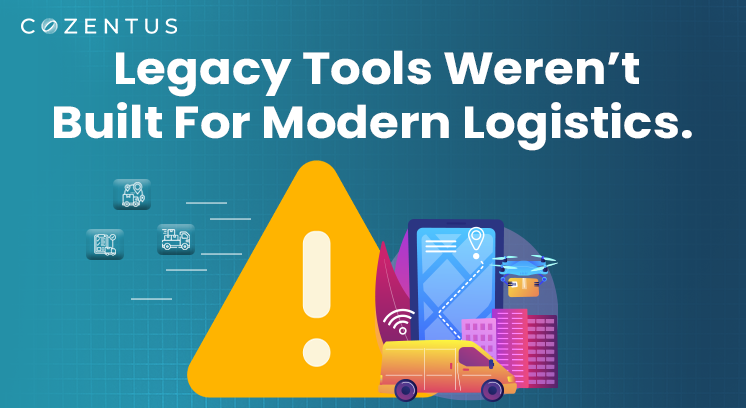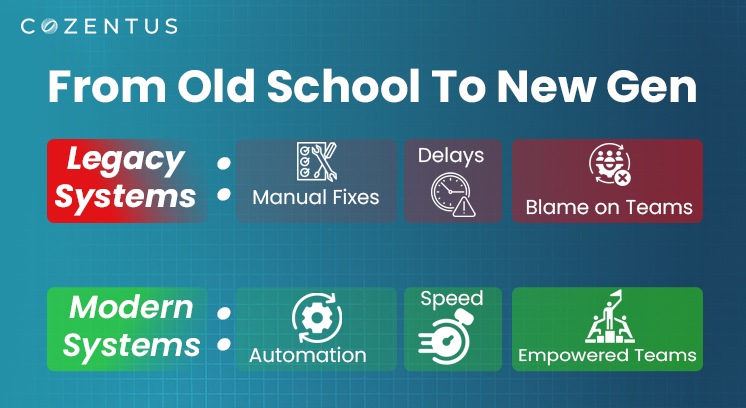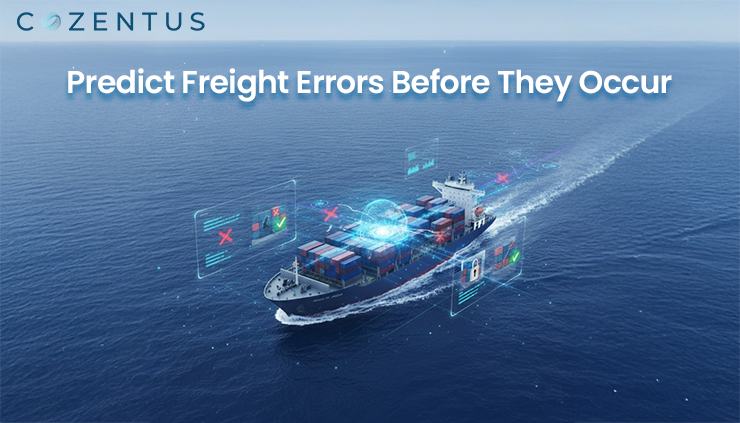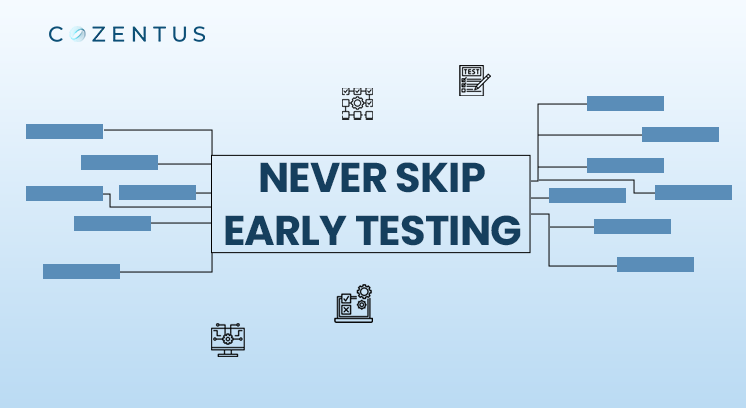Why Your Systems Feel Out of Step with Today’s Workflows
In logistics and supply chain operations, there’s a common frustration. Teams are working hard, but the systems they work on feel slow, complicated, or out of sync with modern demands. Reports take too long, updates come in late, and employees spend more time entering data than solving problems.
You may think something is broken. But in reality, most legacy systems are not failing. They were simply designed for a different era - one where supply chains were slower, customer expectations were lower, and real-time decision-making wasn’t critical.
Your systems aren’t necessarily broken. They were just never built for you, your teams, or the modern way your business operates today.
Let’s dissect this!

Legacy Systems: Strong Foundation, Wrong Fit
Most legacy systems were designed in a different time. Back then, supply chains were slower, customer expectations were simpler, and data moved at a fraction of today’s pace.
They did their job well for their time - batch updates, manual entries, and siloed reports. But the reality is, the world of logistics has completely changed.
• Customers now expect real-time visibility of their shipments.
• Regulators demand faster, simpler compliance reporting.
• Teams are spread across regions that require faster communication
• Costs and margins rely on quick, precise decision-making.
Legacy platforms weren’t designed with these needs in mind. So, while they’re not broken, they’re simply not aligned with the way today's operations take place.
The Wrong Problem to Fix
Here’s where many companies fall into a trap: they think the team is the problem.
“Why can’t the ops team close tickets faster?”
“Why are there so many errors in reports?”
“Why does it take so long to respond to customers?”
But let’s pause. It’s not that the people are inefficient. It’s that the stack they’re working with was never built to support modern workflows.
Think about it - asking your teams to run a digital-first, global operation on old tools is like asking a marathon runner to compete in formal shoes. The runner isn’t failing. The shoes are wrong.
When Systems Don’t Match Workflows
In logistics and supply chain operations, mismatched systems can be seen in clear ways:
• Multiple logins just to track one shipment update.
• Manual data entry between platforms that don’t talk to each other.
• Batch reporting that lags behind actual operations.
• Alerts that overcomplicate instead of prioritizing what matters.
It creates friction. Teams spend more time maintaining the system than serving the business. Leaders spend more energy on accuracy than on driving strategy.
The result? Blame shifts unfairly to people. When in reality, the issue is structural. The system was never built with your current needs in mind.
Logistics Leaders Know This Feeling
Every logistics executive has faced this dreaded call from a customer: “Where’s my shipment?”
You scramble for answers. Your team logs into one system, exports data, cross-checks with another, calls the carrier, and double-verifies with finance. Twenty minutes later, you have an answer.
But by then, the customer has already formed their opinion: “Your process is slow.”
The truth is, your process is fine. The stack is slow.
It’s not broken. It just wasn’t built to give you real-time visibility or seamless integration across functions.
Modern Workflows Demand Modern Tools
Today, workflows in logistics and operations look very different:
• Data needs to be available instantly, not in the next reporting cycle.
• Teams need tools that integrate seamlessly, not create silos.
• Customers demand predictive insights, not reactive updates.
• Leaders need systems that guide big decisions, not constant fixes.
This is where the gap becomes crystal clear. Legacy systems weren’t failing. They were simply built for a different era, with different demands.

From Frustration to Empowerment
At Cozentus, we see this pattern across industries, especially logistics and transportation. The frustration isn’t about “broken systems.” It’s about tools that never truly fit.
When we work with clients, we don’t start by blaming people or tearing everything down. Instead, we focus on:
• Understanding Workflows: How does your team actually work, and where does the friction come from?
• Identifying Gaps: Which processes feel outdated, redundant, or overly manual?
• Layering Solutions Smartly: Instead of replacing everything, we integrate AI, Automation, and visibility layers that work with your existing stack.
The result is powerful: teams feel understood, not blamed. Leaders see efficiency gains without massive disruption. And customers finally get the seamless experience they expect.
You Might Like: Your Ops Team Doesn’t Care About Features - And They’re Right
Logistics Example: Turning Pain into Progress
Consider a logistics provider we recently worked with. Their team was handling thousands of invoices across multiple carriers every month. The system they had in place wasn’t broken; it just wasn’t built for high-volume, real-time validation.
The outcome?
• Delays in identifying duplicate charges.
• Hours of manual reconciliation.
• Frustrated teams who felt “slow,” even though they were working at full capacity.
By layering an automated invoice extraction and auditing solution on top of their existing ERP, they reduced manual effort by 60%, gained real-time financial checks, and improved visibility.
The system wasn’t broken - it simply needed to evolve to match the workflow.
Closing Thought: It’s Not You. It’s the Stack.
For too long, teams have carried the weight of “underperformance” that wasn’t theirs to bear. Leaders have been frustrated, ops teams have been blamed, and customers have been left waiting.
But the truth is liberating: It’s not broken. It was just never built for you.
The moment we recognise the problem, we open the door to real solutions - ones that don’t just change the past, but actually power the future.
At Cozentus, we believe modern logistics deserves modern tools. And when the stack finally fits the workflow, everyone - from ops teams to executives to customers - wins.
Looking for faster systems? Let’s Talk Now!..








